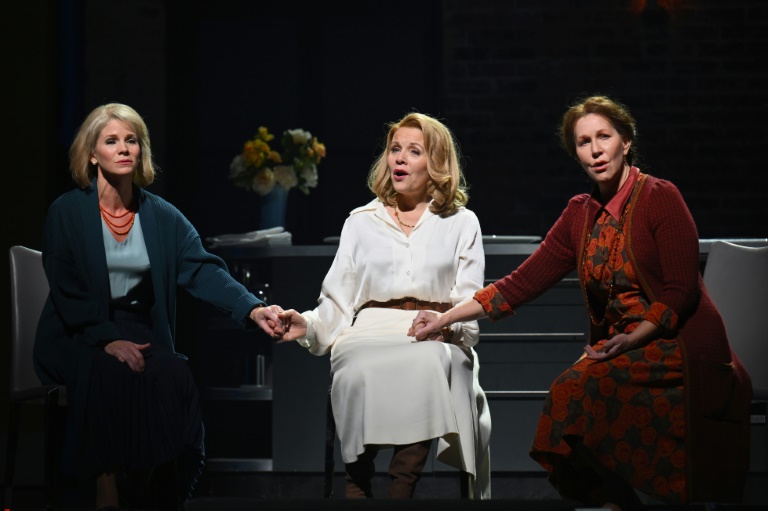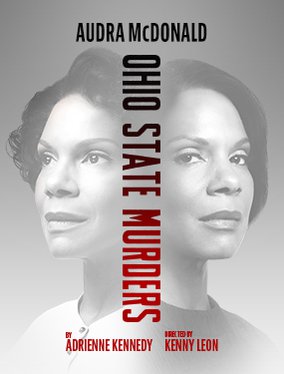Happy New Year to one and all!

December at the Metropolitan Opera brought “The Hours,” based on Michael Cunningham’s novel and the movie of the same title. The source material, so grounded in inner reflection, seems an odd basis for an opera, the most expressive art form going. Nevertheless what led to sold-out performances was the audience’s familiarity with the film if not the novel, and above all, the appearance of three stellar leads: Renée Fleming, Kelli O’Hara and Joyce DiDonato.
Not all was smooth sailing. I have no idea why Composer Kevin Puts and Librettist Greg Pierce opted for the participation of a full chorus which did very little but clutter up the stage and announce the date on which the action takes place. Ditto for the dancers whose appearance only made sense in the scene where Laura Brown (Kelli O’Hara) bakes that ill-fated birthday cake for her husband—Mother’s little helpers. In terms of writing for character, I felt Puts consistently succeeded only with the music for Richard (Kyle Ketelsen) and Virginia Woolf (Joyce DiDonato)—wonderfully contemplative, and her scenes with Leonard Woolf (Sean Panikkar) were excellent. In contrast I thought Kelli O’Hara’s Laura Brown was the least served by the opera’s creators. The character is so recessive, but because this is an opera, she has to verbalize what was best achieved by the novel’s third person narration.
Despite these problems, “The Hours” works best in its second act, especially in a sort of non-duet duet, as Laura ponders her life and “Mrs. Dalloway” while Virginia relates her intent with respect to the work. Also gripping were the flashback to the summer that Clarissa (Renée Fleming), Richard and Louis (William Burden) spent together, resulting in a marvelous vocal exchange between the characters, and the last, heart-rending scene between Clarissa and Richard, culminating in the latter’s suicide.
“The Hours” is due for a return engagement at the Met next season, and it wouldn’t surprise me if some tweaking of the work wasn’t accomplished by then. Nevertheless I’m looking forward to another viewing when it shows up on the Met Opera in Demand website.
——
After seeing “Ohio State Murders,” I now understand why Audra McDonald has won seven Tony Awards
There’s a bit of wordplay in that title, since playwright Adrienne Kennedy, who finally made it to Broadway with this work, makes it clear that “murders” should be read as both a noun and a verb. While there are in fact two homicides in the play, of equal import are the macro-aggressions we see the university and its white students impose on Black students, such as those experienced by Ms. Kennedy in the 1950’s. Having to request permission to major in English Lit? And almost always being turned down? Not to mention being accused of theft every time something does missing from a dorm room.
This 75-minute play alternates between a lecture delivered by a middle-aged author returning to Ohio State University to discuss the violence in her work and flashbacks to the source of that violence, stemming from her time as a Thomas Hardy-loving undergraduate. Although Kennedy envisioned the character to be played by two different actresses, Audra McDonald easily undertakes both roles. Not wanting to spoil, I can only say that the last minute of the play is heartbreaking, and how she manages to perform that eight times a weeks is astonishing.
“Ohio State Murders” is now playing in a limited run on Broadway.
——-
“The Automat,” a lovely documentary now available on HBO Max, revisits the world of nickel coffee and sandwiches and pie behind those little windows that popped open when you put the coins in the slot and twisted the knob. Mel Brooks acts as Raconteur-in-Chief, though if you’re Catskills-orientated, he’s really the Head Tummler, keeping things lively while recounting the joys of those Horn & Hardart restaurants. He’s joined by a number of folks who unfortunately are no longer with us—Colin Powell, Ruth Bader Ginsburg and Carl Reiner, among others, who reminisce about growing up in New York City as patrons of the most accommodating eating spots around.

In addition to that fond look back, “The Automat” is excellent sociology as it explores the origins of Horn & Hardart’s partnership, their first automats in Philadelphia and later New York City and the restaurants’ role as the great equalizer. Well-to-do or blue collar, everyone’s nickel was the same, and the ambience of the restaurants reflected the founders’ philosophy. Changing times unfortunately did the Automat in, specifically the relocation of businesses from urban to suburban, and the dwindling of lunchtime crowds. While I would have thought McDonald’s and other fast food restaurants were the final nail in the coffin, stiff competition came earlier with the emergence of Chock Full O’Nuts and their brand of java.
In addition to reminiscing, Mel Brooks also performs a song he wrote in praise of the Automat at the close of the film. He’s not alone in his musical efforts—as he earlier mentions, Irving Berlin paid homage in 1932 with his “Let’s Have Another Cup of Coffee (And Let’s Have Another Piece of Pie),” as featured in his show “Let’s Face the Music.” The Automat was quite the place to be. I miss it.

